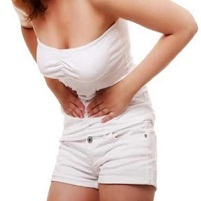![]()

It is estimated that a majority of the female population has suffered from yeast infection at least once in their lifetime. It is caused by a very common type of fungus which is usually found in digestive tract, on the skin and vagina. However, the infection does not occur due to presence of this fungus. There are many other germs in the vagina that maintain balance between good and bad germs.
Sometimes, this balance is disturbed and the number of the fungus causing this infection grows to a point where it becomes yeast infection.
Causes
There are many known causes of this infection. Sometimes, it may occur due to other antibiotic medication you are taking as it may result in changing the balance between various germs. Obesity is also known to disturb the balance and cause this infection. Similarly, pregnancy and diabetes have been known to trigger this infection.
It is important to keep in mind that any kind of sexual contact does not result in this infection. Sometimes, men develop rashes due to sexual contact with a woman who has this infection. Sometimes, yeast infection may be the symptom of other underlying health problems. Also, discharges and other kind of infections are sometimes mistaken for this form of infection.
Symptoms of Yeast Infection
There are many known symptoms of yeast infection. Some of these include:
- Severe itching in the vagina, especially at the entrance. The itching does not go away and causes distress.
- Some of the women have the feeling of a burning sensation inside the vagina which becomes prominent while urinating or during intercourse.
- Swelling and redness at the vagina entrance.
- Soreness and pain in vagina.
- Discharge of white, thick and odor free liquid with cheese like appearance from the vagina.
There are also extremely complicated cases of yeast infection. If the infection keeps recurring on a frequent basis or the vulva shows extreme redness, it may be the symptom of extreme case of infection. In such cases, it is recommended to see the doctor on an immediate basis.
Testing for Yeast Infection
Sometimes, a physical exam is enough to determine this infection. Sometimes, your health care provider may require you to give a small sample of the vaginal discharge for further examination. In other cases, when the infection keeps coming back even after treatment, other tests may be required by the doctor.
Yeast Infection Treatment
There are many over the counter treatments available for treatment of yeast infection in the form of vagina tablets, creams and ointments. Most of the times, one can use these treatments without consulting a healthcare provider first.
It is recommended to use these treatments if the above mentioned symptoms occur and you do not suffer from pain in the pelvis region or have a fever. It is also fine to try out these treatments when this infection has not reared its head many times in the past. Health experts also recommend self treatment for women who are not pregnant and for women who are not at the risk of contacting any STDs.
It is important to use these treatments in the prescribed manner for these to be effective. Therefore, it is recommended to read the instructions on the packages carefully. Most of the times, the treatment is required to be continued for a period ranging from 1 to 7 days. Also, health care experts warn not to stop the treatment when the symptoms get better. Oral medications are also available on prescription for treating this infection.
However, if self-treatment does not get rid of the infection or the infection recurs frequently, it is recommended to see your doctor and seek further treatment.
Prevention and Treatment of Vagina Discharge
It is important to keep the genital area dry and clean at all times. You should avoid using soap on the genital area and rinse it with only water. Also, a warm bath has been known to help with the symptoms.
Yogurt has also been known to help with these symptoms and it is recommended to use condoms.
One should not use any powders, fragrances or other sprays in the genital area. Also, one should avoid any tight shorts or pants that may result in irritation in the genital area.
It is also recommended to avoid undergarments made of nylon or silk. Instead, it is recommended to use cotton undergarments. Nylon and silk is known to cause increase in sweating that may result in irritation.
It is also recommended to not use tampons and instead use pads. You should remember to takeoff any sweaty clothing as soon as possible.
When to Contact Doctor
It is recommended to immediately consult your doctor if you experience the symptoms of yeast infection for the very first time. It is true that these symptoms can be treated with the help of treatments mentioned above. However, you need to be sure that the infection you have is actually yeast infection and not some other health problem.
Your healthcare provider will assist you in determining the root cause of the infection and will also offer you advice on how to avoid this infection in the future.
You are also recommended to consult your doctor if regular treatments do not help with the symptoms. It may be due to some other health problem or it may be due to an extreme case of yeast infection. You should also go see a doctor if the symptoms keep getting worse even after treatment.
If you are suffering from this infection, the above-mentioned treatments have helped many women get rid of this infection and may also help you. However, you should seek an appointment with your health care provider if the symptoms do not go away after regular treatments.
For more information about common symptoms of yeast infection please check the video below.
Have a great day!

 OneCareNow is a general weblog that was created by several writers with a specific goal in mind: To offer one place that covers important topics which people really care about.
OneCareNow is a general weblog that was created by several writers with a specific goal in mind: To offer one place that covers important topics which people really care about.![Back Pain Breakthrough by Palmer & Dr. Young [2024 Review]](https://www.onecarenow.org/wp-content/uploads/2021/02/Back-Pain-Breakthrough-Young-Amy-50x50.png)
![Vincent’s Midas Manifestation System Review [Updated 2024]](https://www.onecarenow.org/wp-content/uploads/2021/02/Midas-Manifestation-50x50.png)
![The NEW Happiness Code by David [Updated 2024 Review]](https://www.onecarenow.org/wp-content/uploads/2021/01/The-NEW-Happiness-Code-50x50.png)
![Michael Christianson’s Manifestation Sigil Review [2024]](https://www.onecarenow.org/wp-content/uploads/2021/01/Manifestation-Sigil-50x50.png)
